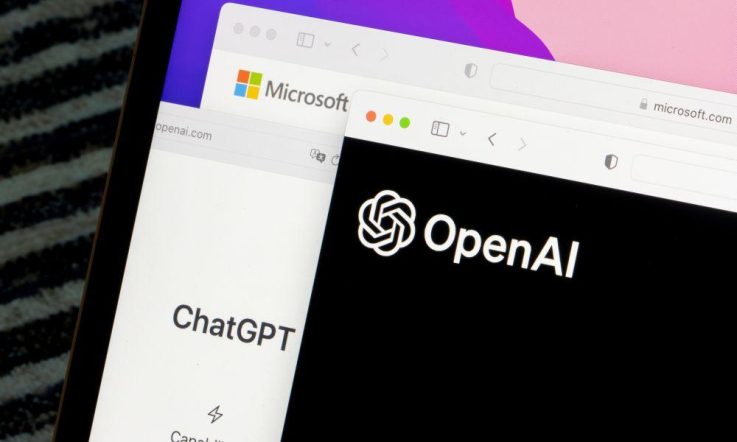In our latest reader submission Rebecca J Collie and Andrew J Martin from UNSW, and Dragan Gasevic from Monash University share a research update from their ongoing work into teachers’ use of generative AI tools such as ChatGPT and DeepSeek. They discuss the findings of a new Australian study, and the implications for schools.
Generative artificial intelligence (generative AI) tools such as ChatGPT, Microsoft Copilot, DeepSeek and Canva use machine learning techniques to generate new content including text, images, audio, and video. They have been gaining worldwide uptake since 2022, including among teachers.
As with all new tools, important questions emerge around their use, including what factors help to promote or hinder their adoption. This gap is crucial to address in order to inform policy and practice as schools and education jurisdictions incorporate generative AI into school curricula.
Since teachers are at the forefront of implementing these practices and policies, it is essential to understand their perceptions of generative AI and how they are integrating it into their work.
In research that we shared with Teacher readers last year (Collie & Martin, 2024), we first began to examine this issue with data collected in 2023, around 6 months after the release of ChatGPT. In that work, we found that school leadership support plays a role in how much teachers value using generative AI for work tasks and, in turn, their actual integration of generative AI at work.
Now, in a new study published in the journal Computers and Education: Artificial Intelligence (Collie et al., 2024), we have extended that work to examine other factors relevant to teachers’ generative AI use. Data for the new study were collected a year after our earlier study, around 18 months after the release of ChatGPT.
In this new study, we asked for teachers’ perspectives on several different job characteristics that might be relevant to generative AI, as well as teachers’ self-efficacy to use generative AI alongside their valuing. The aim of our new study is to broaden understanding about what factors can support teachers’ use of generative AI, along with some factors that may hinder this.
What happened in our new study
We collected data between April and July 2024, from a sample of 368 Australian school teachers. We examined their motivation towards generative AI, and integration of it in teaching and learning.
For motivation, we asked teachers about 2 factors:
- Generative AI self-efficacy – capturing teachers’ confidence that they can effectively apply generative AI to assist them with their work.
- Generative AI valuing – capturing teachers’ belief that generative AI will play a helpful and productive role in their work.
We assessed generative AI integration via 2 variables:
- Integration in teaching-related work – reflecting teachers’ use of this technology to aid in their teaching-related tasks, including planning, teaching, and assessing.
- Integration in student learning activities – referring to teachers’ use of generative AI in student learning activities, such as encouraging students to generate ideas, review their work, and create outlines.
We also asked teachers about 3 job characteristics to see if any are associated with the motivation and integration variables:
- Generative AI support – denoting teachers’ sense that their workplace offers them appropriate support and guidance to apply the technology in their teaching work.
- Time pressure – referring to teachers’ perceptions that their workload is too large to complete within the expected working hours.
- Disruptive student behaviour – reflecting teachers’ sense that it is difficult to keep students on-task and avoid distracting behaviours.
We chose these 3 job characteristics because they may impact teachers’ decisions to use generative AI. For example, having generative AI support in one’s school may mean that teachers receive the guidance and encouragement to experiment with generative AI. Time pressure is a well-recognised job challenge for teachers, and generative AI may be seen as a time-saving tool to get workload under control. Finally, disruptive student behaviour is another challenge for teachers, and generative AI potentially offers a means to identify different approaches for classroom management, or to make tasks more engaging and relevant for students.
Findings from our new study
Our findings showed that teachers who experienced higher levels of generative AI support reported greater self-efficacy and valuing towards the technology. This suggests that efforts by schools and departments to assist teachers to effectively implement generative AI at work are important for teachers’ motivation towards the tools.
We also saw that teachers’ experiencing greater time pressure at work were more likely to value generative AI. This suggests these tools are seen as a means for addressing workload demands and streamlining some tasks.
Turning to generative AI integration, our results showed that generative AI self-efficacy and valuing were both associated with higher levels of generative AI integration in teaching-related work. This finding makes sense. When we feel more confident about using a resource and value it, we’re more likely to engage with that resource.
Interestingly, only generative AI self-efficacy was associated with greater integration in student learning activities. Perhaps this is because teachers want to feel confident in using generative AI first before they ask students to use the technology.
Finally, disruptive student behaviour was not associated with motivation or integration. It appears that when teachers experience this particular job challenge, they turn to other resources to assist them. For instance, colleagues and professional learning may be more relevant to assist with disruptive student behaviour.
What do these findings mean for schools?
Our study results suggest that generative AI support is an avenue that schools might want to address in order to support generative AI motivation and integration.
Strategies to boost generative AI support include providing clear guidelines to teachers about the ways in which these tools can and should be used. Such efforts and guidelines are particularly crucial in light of emerging cases in other professions where generative AI has been misused by employees due to time pressure (Taylor, 2024). Additionally, providing practical examples of successful generative AI implementation is important, such as assisting with parent communications or enhancing the quality of questioning.
In our study, although time pressure was associated with higher valuing of generative AI, it would be inappropriate to conclude that more time pressure is beneficial to teachers. Instead, recognising that teachers may turn to generative AI to manage heavy workloads, broader efforts to streamline their tasks are essential. This includes reducing administrative burdens and increasing planning time (Australian Government, 2022).
Additionally, efforts that offer training and strategies for using generative AI to assist in workload streamlining for automatable tasks (Goldman, 2024) could also be helpful, such as using these tools to polish writing communication to parents.
As generative AI becomes an increasing presence in teachers’ working lives, research in this area is helpful to understand factors that can help or hinder teachers’ motivation to use it, and what can better support its effective integration in classrooms and student learning.
References
Australian Government. (2022). The National Teacher Workforce Action Plan. Priority Area 3 – Keeping the teachers we have. Department of Education. https://www.education.gov.au/national-teacher-workforce-action-plan/priority-area-3-keeping-teachers-we-have
Collie, R.J., & Martin, A. (May 15, 2024). Research news: Valuing and integrating generative AI in teaching. Teacher magazine. https://www.teachermagazine.com/au_en/articles/research-news-valuing-and-integrating-generative-ai-in-teaching
Collie, R. J., Martin, A. J., & Gasevic, D. (2024). Teachers’ generative AI self-efficacy, valuing, and integration at work: Examining job resources and demands. Computers and Education: Artificial Intelligence, 7. https://doi.org/10.1016/j.caeai.2024.100333
Goldman, S. R., Taylor, J., Carreon, A., & Smith, S. J. (2024). Using AI to support special education teacher workload. Journal of Special Education Technology, 39(3), 434-447. https://doi.org/10.1177/01626434241257240
Taylor, J. (February 1, 2024). Australian lawyer caught using ChatGPT filed court documents referencing ‘non-existent’ cases. The Guardian. https://www.theguardian.com/australia-news/2025/feb/01/australian-lawyer-caught-using-chatgpt-filed-court-documents-referencing-non-existent-cases
As a school leader, are your staff already using generative AI tools? Does your school have guidelines about the use of these tools? What about supports for making the most of this technology?
As a teacher, are students using generative AI tools in the classroom or outside school? How confident do you feel in using these same tools? What additional supports would help?



